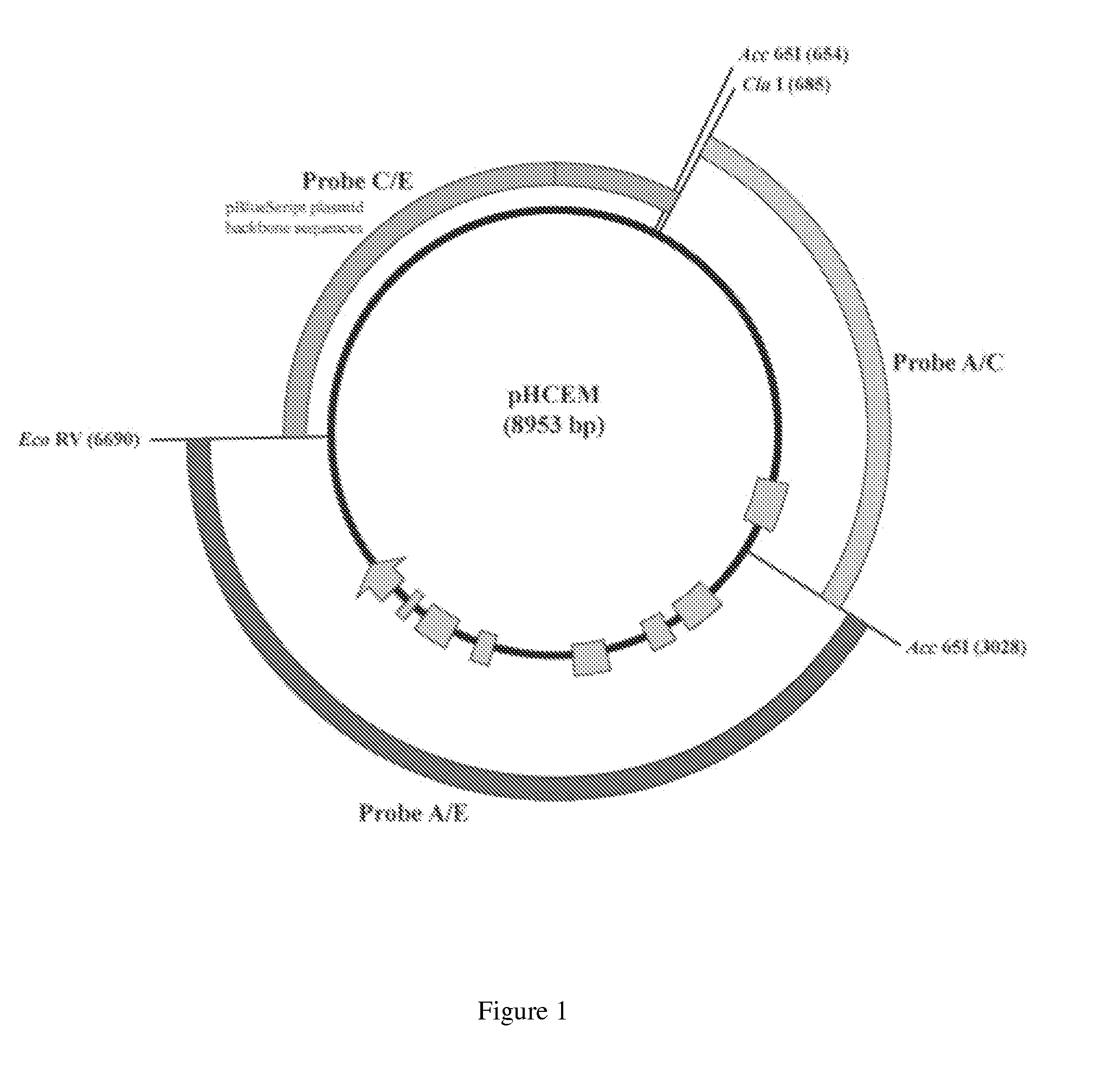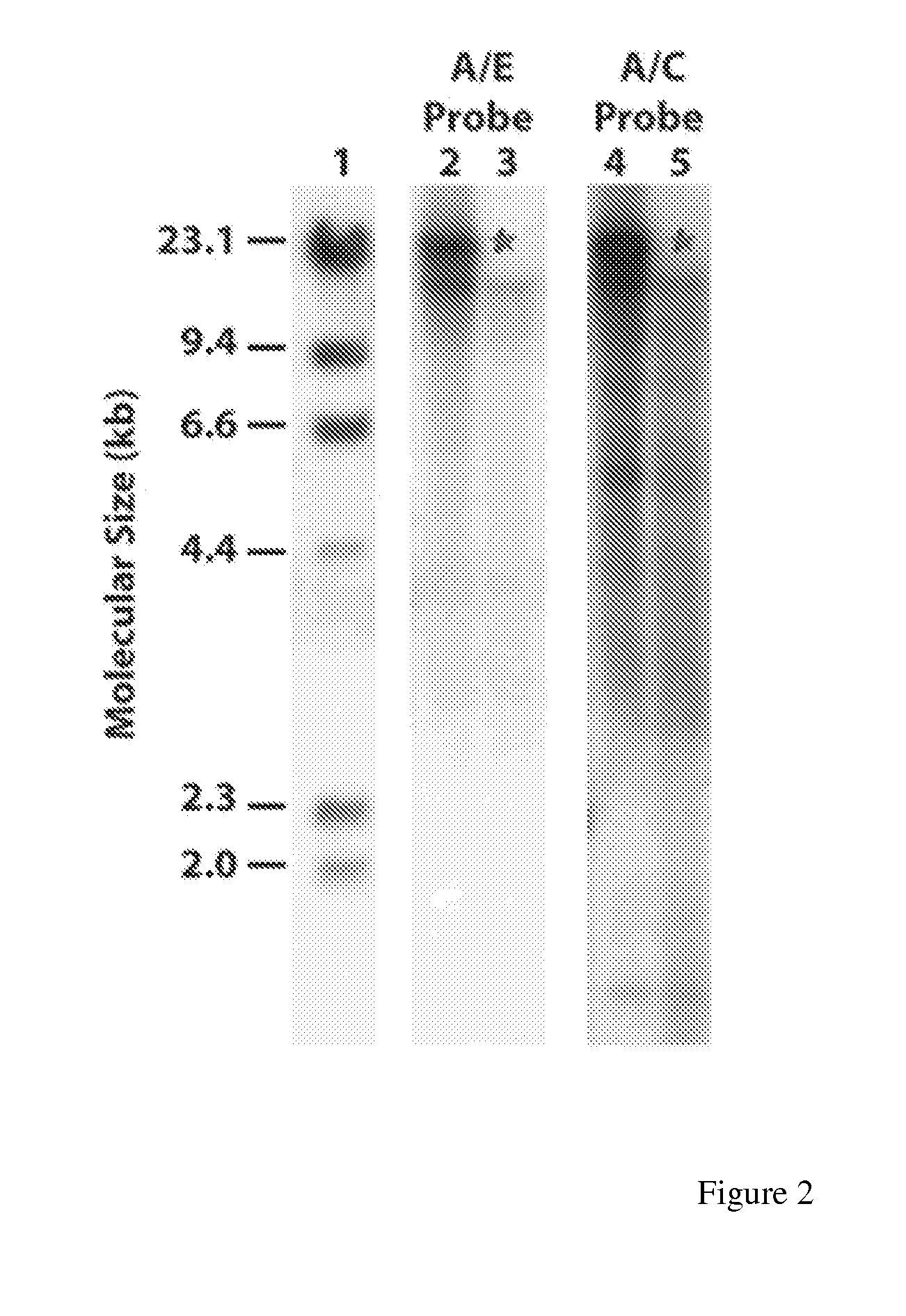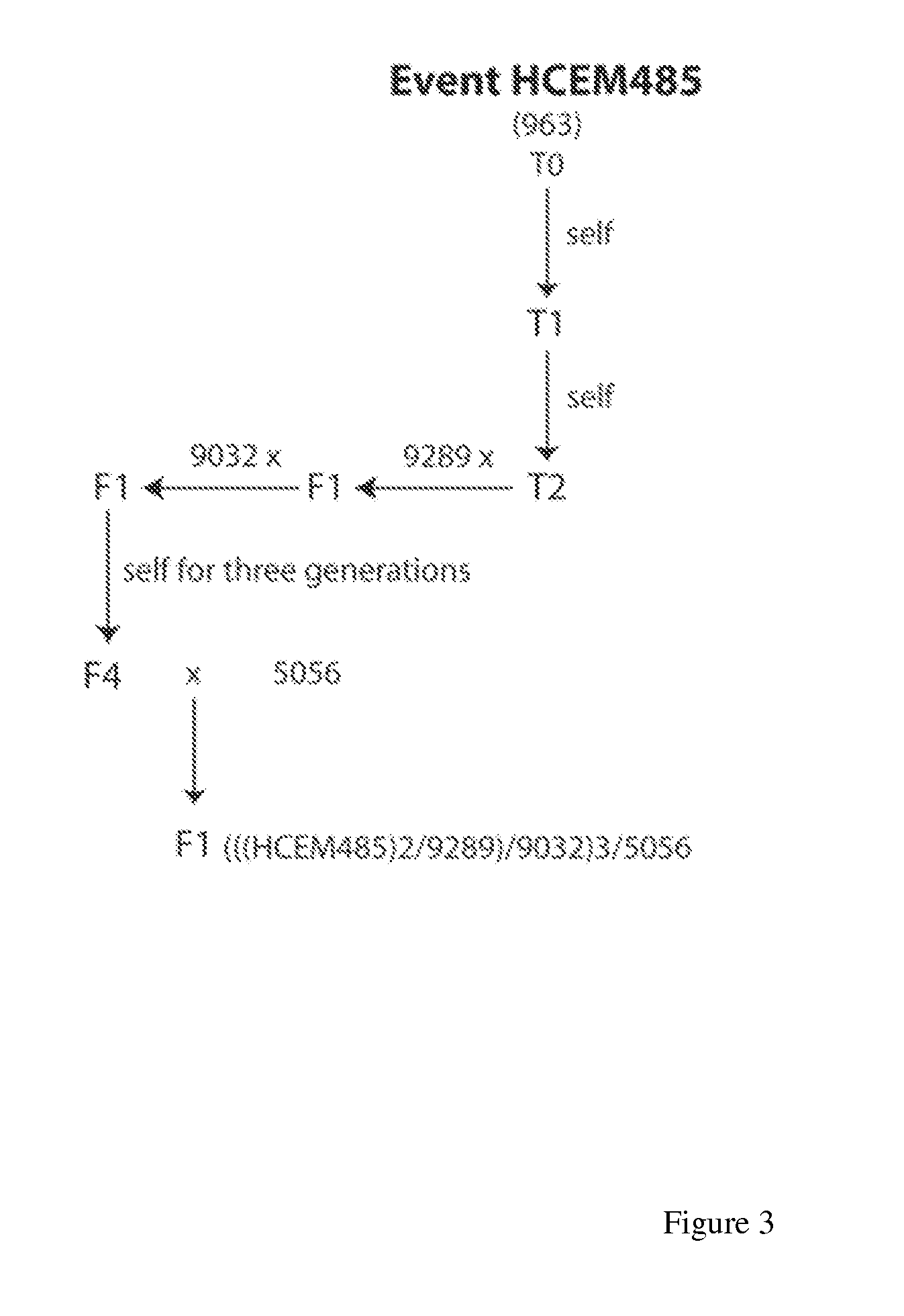Maize event HCEM485, compositions and methods for detecting and use thereof
a technology applied in the field of event and composition, can solve problems such as killing affected plant cells, and achieve the effect of improving breeding efficiency
- Summary
- Abstract
- Description
- Claims
- Application Information
AI Technical Summary
Benefits of technology
Problems solved by technology
Method used
Image
Examples
example 1
[0090]Glyphosate herbicide-tolerant maize line HCEM485 was produced by introducing a 6.0 kb maize genomic fragment containing a modified form of the endogenous maize EPSPS encoding gene. The sequence providing tolerance to glyphosate exposure is described at U.S. Pat. No. 7,045,684, incorporated herein by reference in its' entirety. The sequence is SEQ ID NO: 2. The 6.0 kb fragment includes an EPSPS 5′ regulatory sequence (the sequence before nucleotide 1868), an EPSPS exons and introns sequence (from nucleotide 1868 to nucleotide 5146), and an EPSPS 3′ regulatory sequence (the sequence after nucleotide 5146). The EPSPS coding sequence also encodes a putative chloroplast transit peptide (from nucleotide 1868 to nucleotide 2041). The two mutations introduced into the corn wild-type EPSPS gene are a cytosine to thymine substitution at nucleotide 2886, and a cytosine to thymine substitution at nucleotide 2897. The mutated gene (referred to as HCEM) encodes a mutant protein which is SEQ...
example 2
[0093]The introduced sequences in maize line HCEM485 are contained within a single genetic locus within the maize genome as demonstrated by Southern blot analysis and Mendelian inheritance studies. The modified maize EPSP synthase expressed in maize line HCEM485 is intact, of the expected molecular weight and there was no evidence of truncated forms of the enzyme.
[0094]Southern analysis of HCEM485 maize DNA was performed in order to estimate the number of sites of insertion of the introduced DNA. Two probes were used that together spanned the entire 6.0 kb maize DNA fragment introduced into HCEM485. These probes were designated:
a) A / C—obtained from a double digest of the pHCEM plasmid with ClaI and Acc65I (corresponding to positions 1-2346) (SEQ ID NO: 21); and
b) A / E—obtained from a double digest of the pHCEM plasmid with Acc65I and EcoRV (corresponding to positions 2347-6010) (SEQ ID NO: 22) Probes (ca. 50 ng each) were labeled with 50 μCi of (α-32P)-dCTP (3000 Ci / mmol) using a ran...
example 3
[0096]The Line 963 HCEM485 plant was selfed over two generations and crossed with line 9289, yielding F1 hybrids hemizygous for the insert. A single plant from this cross was crossed with line 9032, yielding F1 populations expected to segregate 1:1 for the glyphosate tolerance trait. The F2 generation was produced by selfing a single trait-positive plant from the preceding F1 generation. Progeny F2 plants should segregate 3:1 for the glyphosate-tolerance trait.
[0097]Segregation analysis was conducted on F1 and F2 segregating plant populations derived from maize line HCEM485 as described by screening for glyphosate tolerance. Progeny plants of each generation were grown in the greenhouse and treated with 2.5× the recommended field application rate of glyphosate at approximately the V4 stage of plant development and visually scored for herbicide susceptibility. Numbers of trait positive and trait negative plants from each generation are shown in Table 1.
TABLE 3Observed vs. expected se...
PUM
| Property | Measurement | Unit |
|---|---|---|
| Time | aaaaa | aaaaa |
| Temperature | aaaaa | aaaaa |
| Temperature | aaaaa | aaaaa |
Abstract
Description
Claims
Application Information
 Login to View More
Login to View More - R&D
- Intellectual Property
- Life Sciences
- Materials
- Tech Scout
- Unparalleled Data Quality
- Higher Quality Content
- 60% Fewer Hallucinations
Browse by: Latest US Patents, China's latest patents, Technical Efficacy Thesaurus, Application Domain, Technology Topic, Popular Technical Reports.
© 2025 PatSnap. All rights reserved.Legal|Privacy policy|Modern Slavery Act Transparency Statement|Sitemap|About US| Contact US: help@patsnap.com



